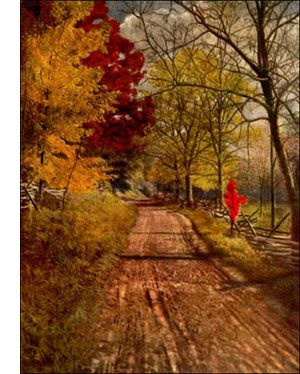Arbor Vitae Tree
 Arbor Vitae (Thuya occidentalis, Linn.)-A conical, compact, resinous evergreen, 25 to 65 feet high, with short, ascending branches and flat, frond-like spray. Bark light brown, thin, cracking into ridges with frayed-out, stringy edges; branches smooth, red, shining. Wood soft, brittle, coarse, durable in the soil, light brown, fragrant. Buds naked, very small. Leaves, both keeled and flat, 4-ranked, to fit the flat twig, scale-like, blunt, or pointed, glandular, aromatic. Flowers, May, monoecious on tips of side twigs, but separate; staminate, a globose cluster of stamens; pistillate, a red cone of 8 to 12 scales with ovules on lower or central ones only. Fruit oval, pale brown, erect cone, annual, with 6 to 12 oblong scales. Preferred habitat, low, swampy ground near streams. Distribution, New Brunswick to Manitoba; Minnesota, Michigan and northern Illinois; south along Atlantic States into New Jersey, along Alleghanies to North Carolina and eastern Tennessee. Uses: Valuable ornamental and hedge tree. Wood used for telegraph poles, posts, railroad ties and shingles. Bark rich in tannin.
Arbor Vitae (Thuya occidentalis, Linn.)-A conical, compact, resinous evergreen, 25 to 65 feet high, with short, ascending branches and flat, frond-like spray. Bark light brown, thin, cracking into ridges with frayed-out, stringy edges; branches smooth, red, shining. Wood soft, brittle, coarse, durable in the soil, light brown, fragrant. Buds naked, very small. Leaves, both keeled and flat, 4-ranked, to fit the flat twig, scale-like, blunt, or pointed, glandular, aromatic. Flowers, May, monoecious on tips of side twigs, but separate; staminate, a globose cluster of stamens; pistillate, a red cone of 8 to 12 scales with ovules on lower or central ones only. Fruit oval, pale brown, erect cone, annual, with 6 to 12 oblong scales. Preferred habitat, low, swampy ground near streams. Distribution, New Brunswick to Manitoba; Minnesota, Michigan and northern Illinois; south along Atlantic States into New Jersey, along Alleghanies to North Carolina and eastern Tennessee. Uses: Valuable ornamental and hedge tree. Wood used for telegraph poles, posts, railroad ties and shingles. Bark rich in tannin.The flat leaf spray of the arbor vitae of the Northern States sets it apart from other evergreens, and its use in hedges makes it familiar to most people. Children as well as grown people generally know it. Unfortunately the name, white cedar, has become attached to this tree, confusing it with another genus, Chamae-cyparis, in which this name reappears.
Through years of cultivation this arbor vitae has produced a great number of garden varieties. Their slow growth and compact habit adapt them-to use in formal gardens. They are hardy, they submit to severe pruning and late transplanting, and they are easily propagated from seed-these traits of character commend them to nurserymen and planters. They are planted with profit for telegraph poles and posts, as the wood, though soft, is very durable in soil. As windbreaks they do good service, and have unique ornamental value when massed on stream borders or grouped on rocky slopes.